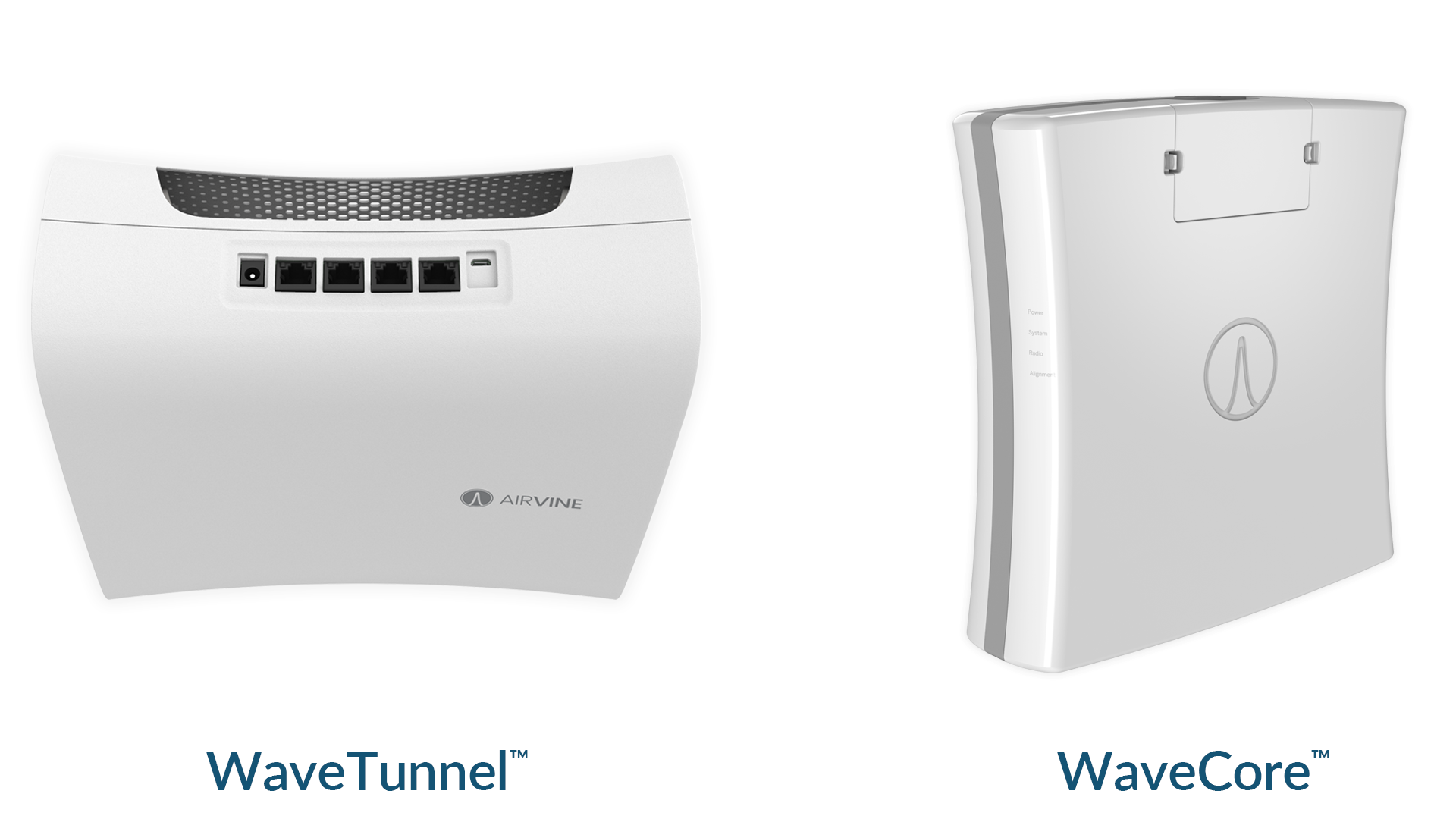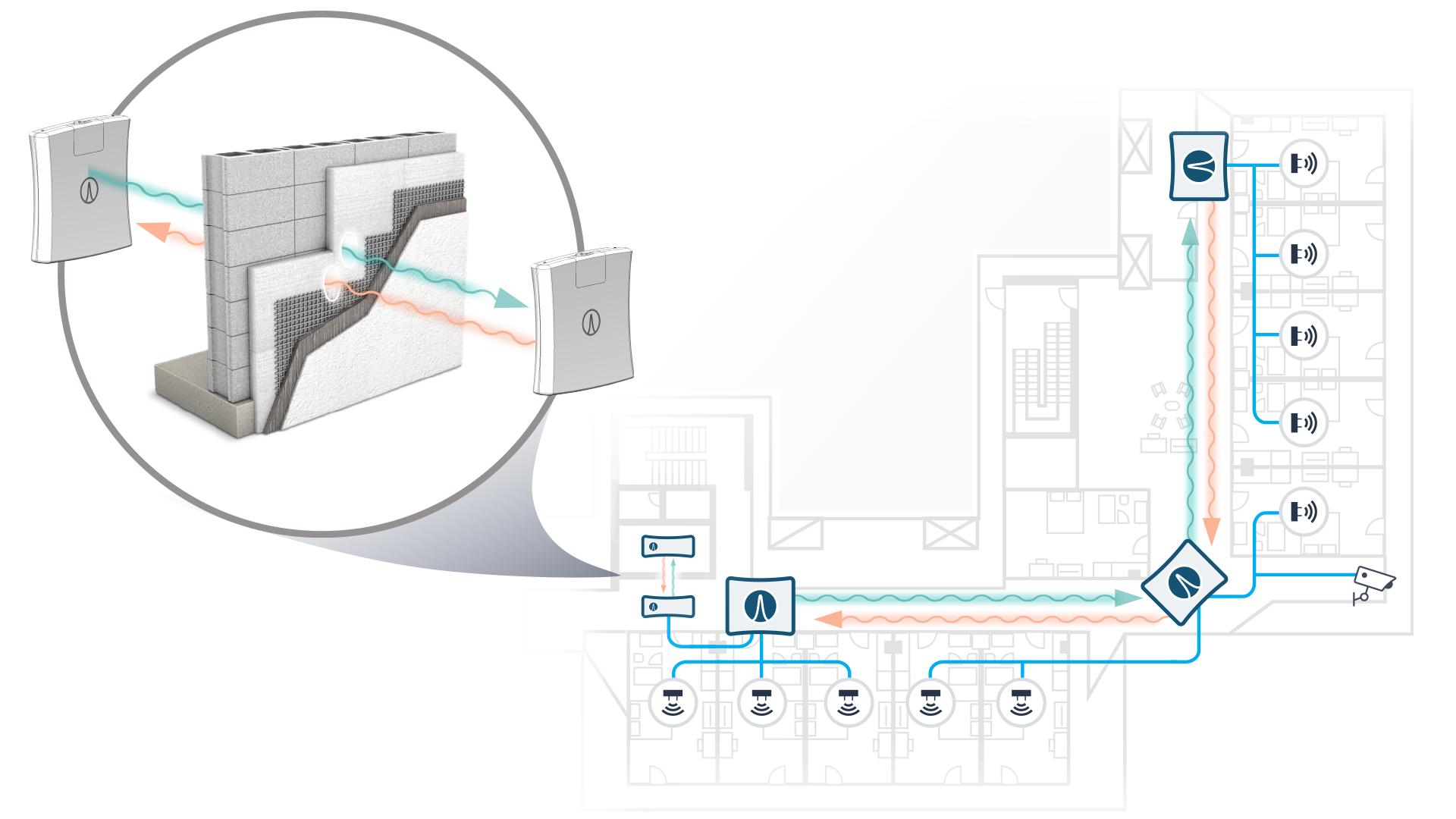The World’s Only Wireless Bridge That Goes Through Concrete
The introduction of any new technology or a new application of an existing technology comes with a “lessons learned” phase. We have been shipping and deploying with customers the innovative WaveTunnelTM system for more than a year now. This experience, which includes numerous trials, testing sessions and commercial deployments, has proven that 60GHz broadband wireless technology has truly found its home as an indoor wireless backbone. As a result, we have proven that the WaveTunnel provides pervasive Gigabit-speed connectivity in MDUs, factories, warehouses, conference centers and other similar large properties.
This success is based on our first-in-the-industry accomplishment of achieving NLOS connectivity for 60GHz systems. NLOS in the case of the WaveTunnel means it can indeed penetrate interior walls such as plasterboard and wood, glass windows and partitions of various types. Advances in beam steering capabilities mean that WaveTunnel signals can also go down long corridors (distances of 150 meters are no problem, with transmission rates averaging 1 Gbps – distances of 100 – 125 meters average 1.8 Gbps) and “bend” around corners (even 90-degree ones). All of this has resulted in tremendous cost and time savings in terms of Ethernet cables and other equipment (such as conduits and IDFs), labor and permitting processes.

However, there is one obstacle that we just cannot avoid and “get around” – and that is thick concrete walls, which average 20 cm / 8 in. or more in Commercial Real Estate (CRE) buildings around the world. These types of walls can form a building’s perimeter, serve as interior load bearing walls and as protection for spaces such as fire control or network server rooms. Connecting rooms or production areas separated by such walls can be even more problematic than connecting scores of Wi-Fi APs and other equipment in a wide open and spacious factory floor, as it often involves drilling a fairly good-sized hole through the wall, which is known as “core” drilling.

Obviously, this type of task requires additional expertise (not the “average” cable installation company) and can entail additional considerations. For example, if the wall is classified as a firewall, then permits and x-ray style inspections become part of the process – which adds time and money to the project. Another issue is that of fire alarm control rooms. Any CRE structure of a certain size (which varies from one locality to another) must contain a fire control system and often they are located in the basement and surrounded by thick concrete walls.
These rooms are mandated to have connectivity to the outside world (to the fire department and perhaps other first responder entities) and 3G wireless connections have been used to accomplish this vital link since the introduction of that technology more than 20 years ago. However, 3G is now being phased out. Furthermore, newer fire control systems require more of a broadband connection and 3G does not have the required bandwidth. 5G does have the required bandwidth, but its signal propagation characteristics prevent it from penetrating the walls and making a connection. In this situation, our analysis shows that the core drilling required to run an Ethernet cable through the wall would cost between $3000 and $10,000 and require a Professional Engineer sign-off — all of which can extend the project time by weeks or months.
And this is only looking at the problem from a “sideways” perspective – what about “up and down” (as in floors and ceilings)? Almost all floors in CRE structures are made up of concrete and rebar with a thickness of 4 to 5 inches minimum. To connect the floors, present mode of operations today consists of either routing cables to the nearest elevator riser shaft or existing riser or drilling through the floor. In the case of the latter, structural integrity requirements call for permits and inspections that add an average of $3000 to the cost and a month added to the project timeline.
After being confronted with this reality over the last year, we went back to the lab to see how we could develop a solution that, combined with the proven effectiveness of the WaveTunnel, would result in an all-inclusive and pervasive broadband backhaul solution within any large structure. The goal was to be able to provide a 2+ Gbps connection through a minimum of 12” of concrete.
We completed our in-house testing in May 2024 and over the last few months we have been trialing the system with select customers, some in conjunction with our North America distributor Power & Tel (P&T). These were our “proof of concept” deployments and the new WaveCore systems passed with flying colors. In one trial we connected through 8” of concrete in the middle of a 54’- link at 3Gbps. In another we were able to connect through a 12” concrete wall in a garage in a 6-foot link at just under 4Gbps.

WaveCore Tested on a 8” Cinderblock Wall
Backed by these impressive results, we are now excited to announce the commercial availability of the new WaveCore product. It is available for immediate shipment and you can see it in action at the SCTE Cable Tec Expo next month in Atlanta (in the booth of our partner P&T). Thanks to the efforts of our engineering team, our technology partners and customers, Airvine now has a complete product portfolio and the combination of the WaveTunnel and WaveCore product lines replaces the need for what can be miles of Ethernet cabling in a wide variety of settings – and the associated labor costs to deploy it.
Our innovations in wireless engineering enable gigabit speed connections that now can go around corners, through floors and walls (including thick, load-bearing walls) and other formerly impenetrable barriers. Gone are the days of conduit, drilling, permits, structural inspections and other hassles that come with deploying cables to connect Wi-Fi APs, IoT equipment and other Ethernet devices. The introduction of the WaveCore represents the culmination of efforts at Airvine since the founding of the company—that is, solutions that can be deployed in Any Building, with Any Floor Plan and Anywhere.